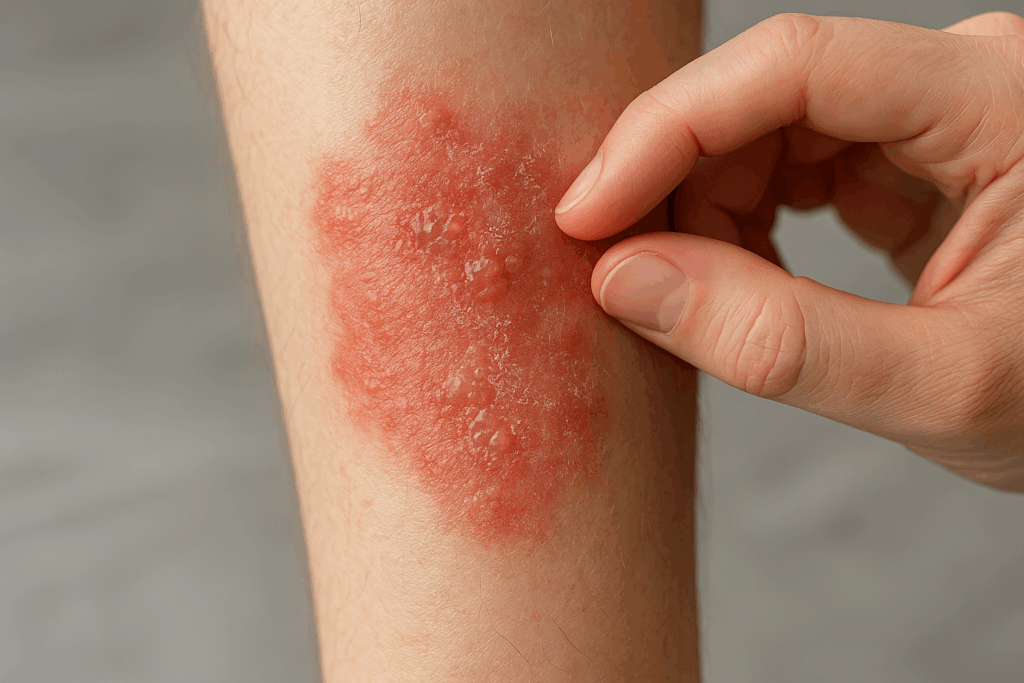Ozone and Eczema
Understanding Eczema and Dermatitis
Eczema is a general term for dermatitis, which refers to inflammation of the skin. There are several types, including Contact Dermatitis, Seborrheic Dermatitis, Nummular Dermatitis, Atopic Dermatitis, and Stasis Dermatitis. While the types may vary, they all share common symptoms: red, dry, itchy, and often painful skin. Some sufferers may even experience bumps or blisters.
Why Ozone Therapy Makes Sense for Eczema
Ozone has well-documented anti-inflammatory properties, making it a natural option for treating eczema. The therapeutic effects come from increased oxygenation, antimicrobial action, reduction of pro-inflammatory cytokines, and enhanced antioxidant production. One benefit not previously covered is how ozone impacts cytokine activity—let’s explore that next.
Cytokines and Skin Inflammation

Cytokines are signaling proteins that play a crucial role in immune system communication. Some cytokines promote inflammation, while others help reduce it. They influence cell growth, differentiation, and the production of immune and blood cells. In the context of dermatitis, the type and quantity of cytokines determine the severity and progression of inflammation.
Ozone as an Immune Regulator
What sets ozone therapy apart is its ability to regulate the immune response rather than simply boost it. In cases of eczema, boosting the immune system would only worsen the inflammation. Ozone, however, helps immune cells become less reactive and more efficient in communication. This regulation helps reduce overreactions and promotes healing.
A Helpful Analogy
Think of the immune system like a hyper coworker—full of energy but unable to focus. Communication breaks down, and nothing gets done efficiently. Ozone steps in like a calming leader, helping immune cells get organized, focus on the real problem, and respond appropriately without overreacting.
Conventional vs. Holistic Treatments
In integrative medicine, eczema is treated holistically with a combination of topical or oral medications, supplements, herbs, and lifestyle changes. Traditional medical approaches often rely on steroid prescriptions. While these may reduce inflammation quickly, the relief is often short-lived because the root cause isn’t addressed.
The Role of Diet
Diet plays a major role in managing skin conditions. Common dietary triggers include eggs, dairy, sugar, and citrus. In cases like Seborrheic Dermatitis, an overgrowth of a naturally occurring yeast called Malassezia can provoke inflammation. Removing sugar from the diet, even natural sugars like honey and fruit, can help—but antifungal herbs or medications are usually needed as well.
Supporting the Skin Topically
For Seborrheic Dermatitis, using Ozone Soap twice daily can be extremely helpful. It reduces inflammation, keeps skin oils under control, and helps manage yeast overgrowth. Zinc is another powerful topical solution, as it effectively combats Malassezia.
Product Recommendations for Seborrheic Dermatitis
Avoid using Ozone Face Moisturizer or Ozone Skin Salve for Seborrheic Dermatitis due to their higher oil content. Instead, opt for Ozone Skin Lotion, which hydrates the skin with a lower oil concentration. Maintaining a clean skincare routine and a diet that supports immune health are both essential for managing dermatitis.
Here are a few links:
https://pmc.ncbi.nlm.nih.gov/articles/PMC8910188/ https://www.sciencedirect.com/science/article/pii/S1567576919321873 https://biomedres.us/pdfs/BJSTR.MS.ID.008089.pdf
